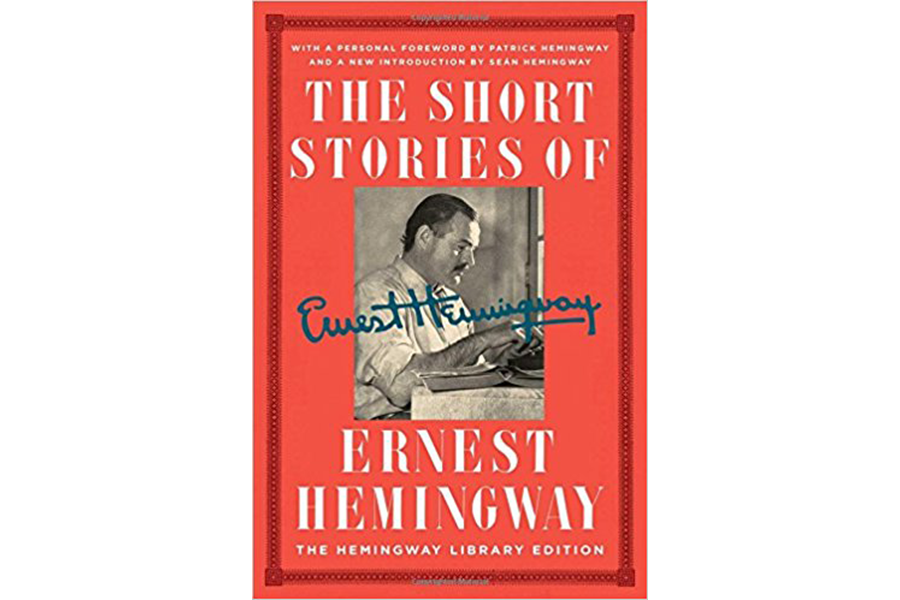'The Short Stories of Ernest Hemingway' reveals much – maybe too much
Loading...
“Pay no attention,” asserted the man who claimed to be the Great and Powerful Oz, “to that man behind the curtain.” But what about the writer behind the printed page?
The at-once illuminating and irritating new Hemingway Library edition of The Short Stories of Ernest Hemingway pulls back the drapes on one of the major figures of 20th-century American literature. Presented alongside Hemingway’s stories are excerpts from earlier iterations of those very stories, many replete with discarded digressions, different starts or finishes, and much material that has been crossed-out. In some cases, the juxtaposition offers the reader a step-by-step look at how these works entered the world.
To be sure, it is undeniably fascinating to see how Hemingway swapped one word for another, or sliced and diced sentences, while working on such classic stories as “Soldier’s Home” or “The Undefeated” (both 1925). Yet the experience also cuts Hemingway down to size: No longer concealed by a curtain, he is revealed as a writer working overtime to project an image of perfection. After all, no writer toils just for the sake of toiling: In rewriting or reimagining a particular story, Hemingway was striving to fashion a finished product whose seams would not show.
Yet this volume aims to display those very seams. According to editor Sean Hemingway (also the writer’s grandson), Hemingway’s stories usually originated as hand-written drafts. “He then normally had one or more typed drafts that he continued to edit, frequently by hand, sometimes with lengthy additions or alternate drafts of passages,” Sean Hemingway writes in the introduction. “Most often, he tended to cut during his revision process, and he would continue to revise in the proof stage as well, using every opportunity to make a story as good as it could be.”
Alas, therein lies the rub: The equivocations inherent in the writing process – should it be this word, or that word? – are at odds with the tough, nary-an-extra-word decisiveness associated with Hemingway. By contrast, it is disappointing to discover that the flawless opening of “Big Two-Hearted River” (1925) – among a string of stories concerning Hemingway alter ego Nick Adams – was arrived at gradually, with one manuscript containing a “false start” and others with material the writer ultimately junked. “Time and again, through careful editing, he purposefully cut a significant amount of material to make each story as tight and concise as possible,” Sean Hemingway writes – so why undo his meticulous work?
There is something pedantic about inspecting such revisions. The collection is organized to invite comparisons between a finished story and the drafts that preceded it, rewarding the reader for finding fault lines. What’s more, such scrutiny quickly grows tiresome. For example, chapter 22 – the 1933 story “The Gambler, the Nun, and the Radio” – is followed by chapter 22a, an earlier version of the story (called “Three Ambitions”), and chapters 22b, 22c, and 22d, consisting of additional stabs at the ending. The addition of letters to chapter numbers adds to the book’s homework-like aura. Does it add to our appreciation of “The Short Happy Life of Francis Macomber,” from 1936, to have a list of other titles Hemingway considered, including the frightful “Brief Mastery” and “The Cult of Violence”?
How, then, can a reviewer render a verdict on a book that includes one gem after another – but also contains material that is ultimately extraneous to those gems? It would be unwise to suggest skipping any book authored by Hemingway, so a mixed verdict will have to suffice: Readers should buy or borrow this collection for the stories it houses rather than the supplemental content that is its raison d’etre.
When divorced from the work product out of which they arose, the stories themselves remain sparkling and sure-footed. To take just one example, “Indian Camp” (1924) – telling of young Nick Adams journeying with his physician father to a Native American camp where a woman is experiencing a protracted childbirth – is still the definitive word on the futility of shielding children from grim grown-up realities.
In the story, Nick’s father tries to prepare him in a measured, forceful tone: “Listen to me. What she is going through is called being in labor. The baby wants to be born and she wants it to be born. All her muscles are trying to get the baby born.” Yet, even after his father has safely brought the newborn into the world, a gruesome surprise is in store: The new mother’s husband is revealed to have killed himself, leading Nick’s father to confess to his son that he erred in having him tag along: “It was an awful mess to put you through.” Yet, when the two depart the camp by boat, Hemingway masterfully illustrates the sudden shift a child can make from trauma to tranquility. “In the early morning on the lake sitting in the stern of the boat with his father rowing,” he writes, “he felt quite sure that he would never die.”
The material that follows this brilliant story only muddies our picture of it; that an early draft included an opener posthumously spun off into the story “Three Shots” is, at best, a curiosity.
This book may have set out to prove that Hemingway had to work to make a story sing, but it has the opposite effect: We are grateful for his stories in their final, completed forms.
Freelance writer Peter Tonguette contributes to The Columbus Dispatch, The Wall Street Journal, National Review, and other publications.








